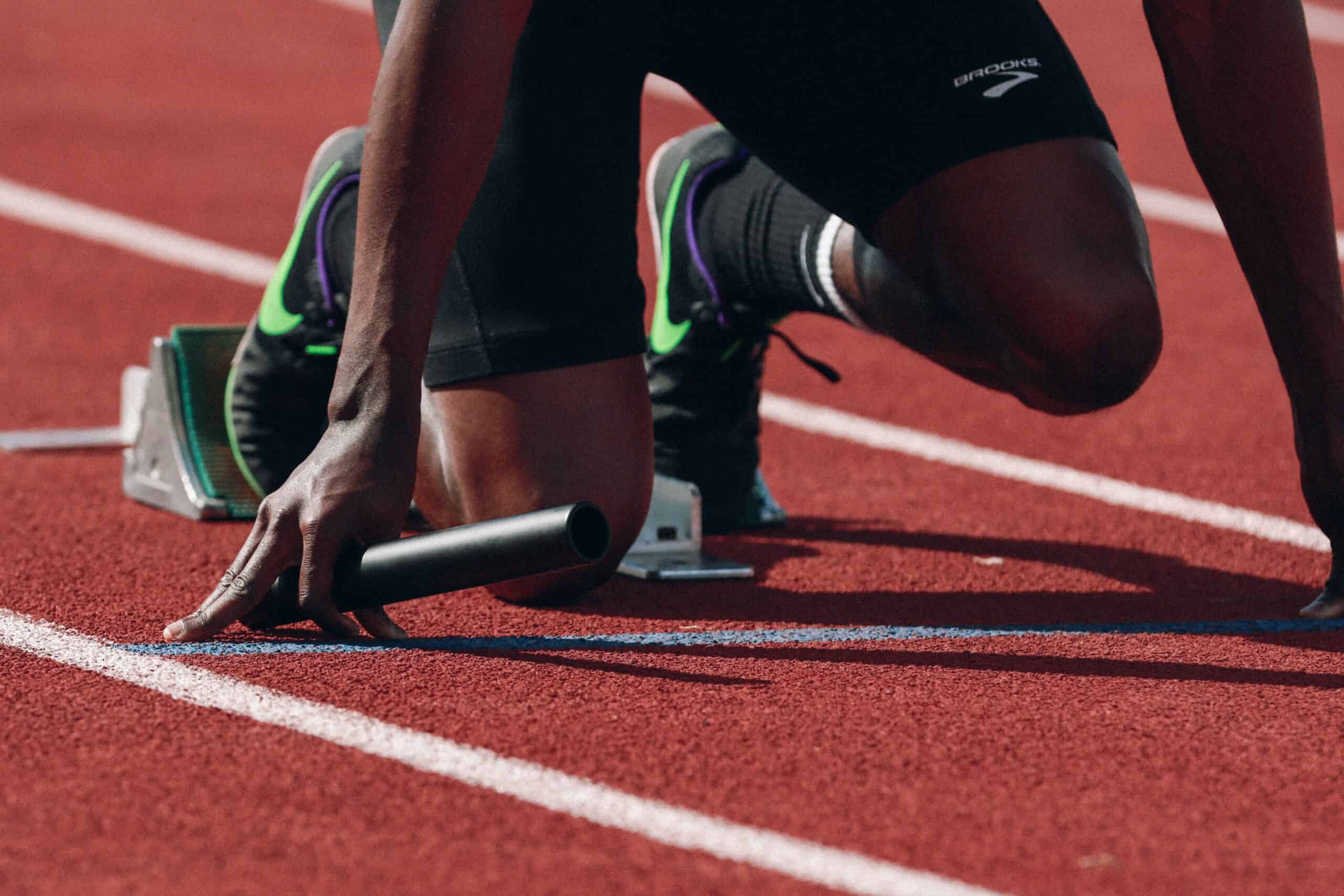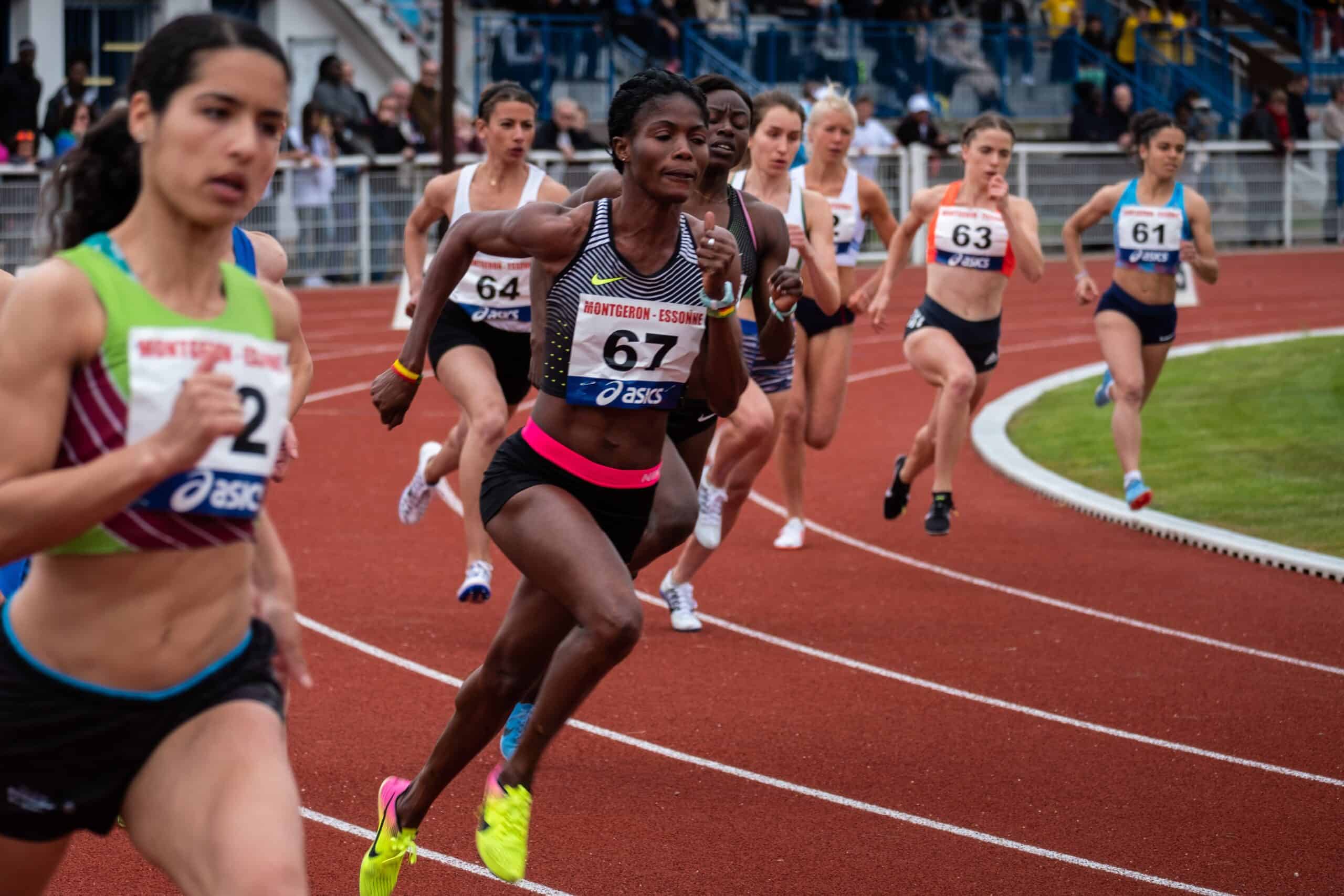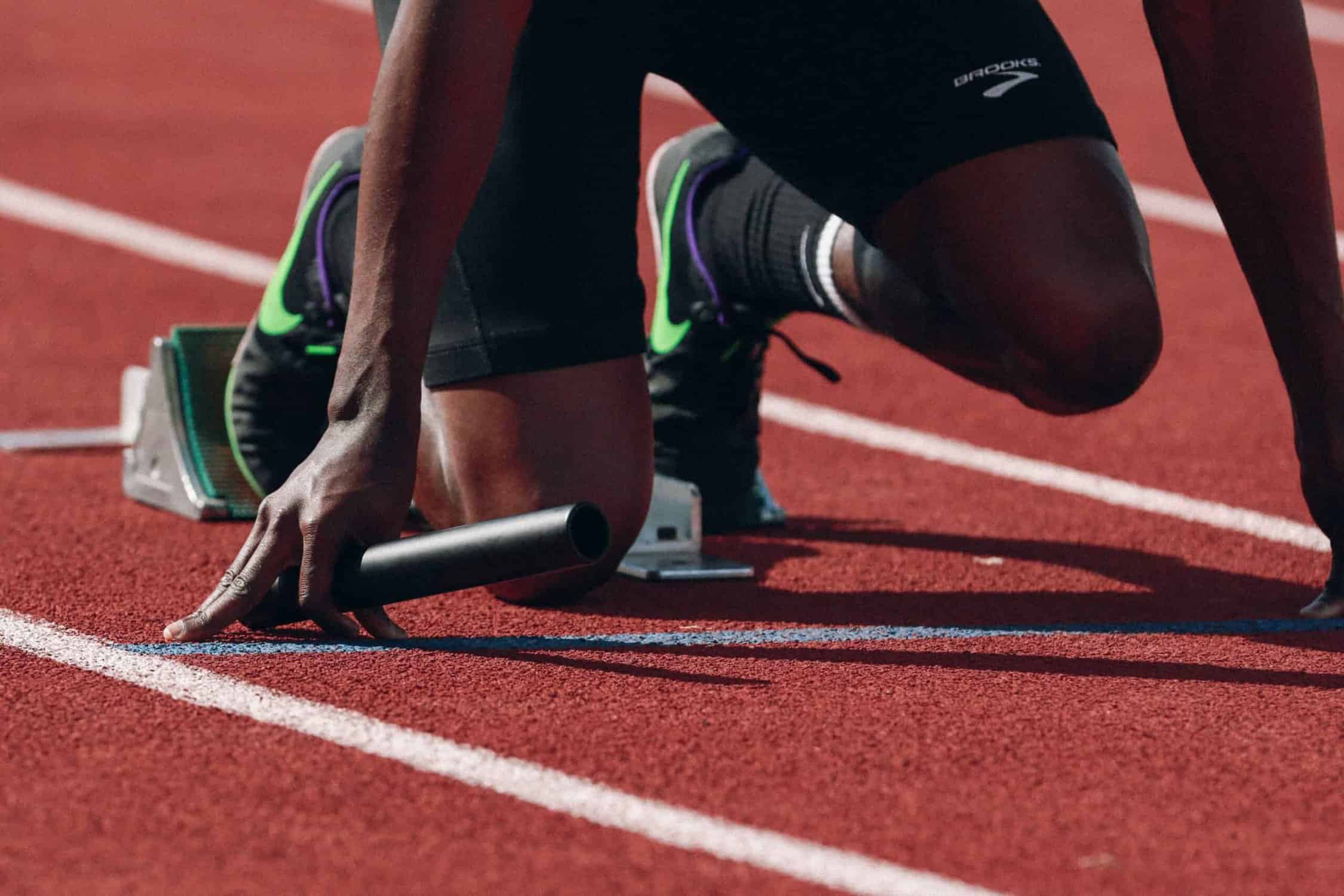Everything you need to know about the gold standard of aerobic fitness. So, you’ve heard the phrase VO2 Max (also seen as V02 max) whether casually dropped in conversation, watching a YouTube influencer on a treadmill, or in your favorite running or fitness magazine. Perhaps you nodded along with the conversation, and now you’re trying to find out exactly what it is. And, why is everyone obsessed with it. Until recently, a VO2 Max test was only reserved for elite athletes.
A VO2 max test, which is the measuring of maximal aerobic exercise capacity, were expensive to do. For most amateur and recreational runners, it didn’t provide enough value to the athlete to make sense to perform. As a reminder, aerobic exercises focus on increase heart and breathing like jogging. While anaerobic exercises is shorter, less focused on heart rate like weight lifting.
The costs of measuring VO2 Max have reduced. The benefits of the results towards measuring exercise capacity as well as a predictor of longevity, VO2 Max tests have become more popular.
In this blog post, we breakdown what on earth a VO2 Max is, why runners care about it — and why you might — benchmark scores, how to measure it, and how to improve your scores.

What is a VO2 Max?
VO2 Max is the maximum volume of oxygen uptake utilized by the body during severe or maximal exercise, as mentioned by one study. In endurance athletes, it’s often considered the gold standard test for assessing aerobic and cardiovascular fitness.
Typically, the higher your VO2, the more oxygen can be delivered to your working muscles and organs. If more oxygen can be delivered to your working organs and muscles, your body will more efficiently produce more energy – equating to a higher level of performance.
It’s therefore no surprise that some of the best marathon and half marathon runners have very high VO2 Max Scores. Eliud Kipchoge, for example, is rumored to have a VO2 Max as high as 85-90 ml/kg/min.
Understanding your VO2 Max is an essential part of training methodologies like polarized training, threshold runs, and heart rate training.
But, more about what that means that later in the article.
Why do people care about VO2 Max?
VO2 Max scores are a useful measurement of aerobic fitness.
Normally, as a runner, the higher your VO2 Max, the better your endurance and fitness levels.
For many athletes and runners, tracking their VO2 max is a way to quantify and more easily measure the progress their training is having on their fitness and, in turn, performance.
And for those who aren’t necessarily interested in racing or competing at the highest level, training to improve your VO2 Max is a worthwhile goal to keep you motivated and or to measure the progress and impact of your training. As you improve your score, you should see improvements in your running performance and overall physical well being.
You can also use your VO2 Max scores to calculate accurate training zones as part of your overall training program. This can help you improve as you can target the exact required intensity for each session without the added fatigue and risk of injury.
For example, you can calculate your zone 2 intensity for long and easy runs. This way, you know you’re training hard enough to stimulate the necessary adaptations, but no harder than needed.
It’s not all about getting faster, either. Numerous studies have found that those who have higher levels of cardiorespiratory fitness are at a lower risk of all-cause mortality, coronary heart disease, and cardiovascular disease. So it’s also a good indicator of overall good health!

VO2 Max benchmarks
When comparing your VO2 Max scores to others, it’s essential to do so with the right sex and age bracket. Men and women have different physiology and body composition, which affects the scores. For example, on average men have larger lungs, a bigger heart, and more muscle mass.
It’s important to note that VO2 Max is only one measurement of cardiovascular fitness.
VO2 Max scores for men by age
The below scores are the median average VO2 max values for men, classified by age — please note these are just benchmark scores.
| Age | Very Poor | Poor | Fair | Good | Excellent | Superior |
| 13-19 | <35.0 | 35.0-38.3 | 38.4-45.1 | 45.2-50.9 | 51.0-55.9 | >55.9 |
| 20-29 | <33.0 | 33.0-36.4 | 36.5-42.4 | 42.5-46.4 | 46.5-52.4 | >52.4 |
| 30-39 | <31.5 | 31.5-35.4 | 35.5-40.9 | 41.0-44.9 | 45.0-49.4 | >49.4 |
| 40-49 | <30.2 | 30.2-33.5 | 33.6-38.9 | 39.0-43.7 | 43.8-48.0 | >48.0 |
| 50-59 | <26.1 | 26.1-30.9 | 31.0-35.7 | 35.8-40.9 | 41.0-45.3 | >45.3 |
| 60+ | <20.5 | 20.5-26.0 | 26.1-32.2 | 32.3-36.4 | 36.5-44.2 | >44.2 |
VO2 Max scores for women by age
The below scores are the median average VO2 max values for women, classified by age — please note these are just benchmark scores.
| Age | Very Poor | Poor | Fair | Good | Excellent | Superior |
| 13-19 | <25.0 | 25.0-30.9 | 31.0-34.9 | 35.0-38.9 | 39.0-41.9 | >41.9 |
| 20-29 | <23.6 | 23.6-28.9 | 29.0-32.9 | 33.0-36.9 | 37.0-41.0 | >41.0 |
| 30-39 | <22.8 | 22.8-26.9 | 27.0-31.4 | 31.5-35.6 | 35.7-40.0 | >40.0 |
| 40-49 | <21.0 | 21.0-24.4 | 24.5-28.9 | 29.0-32.8 | 32.9-36.9 | >36.9 |
| 50-59 | <20.2 | 20.2-22.7 | 22.8-26.9 | 27.0-31.4 | 31.5-35.7 | >35.7 |
| 60+ | <17.5 | 17.5-20.1 | 20.2-24.4 | 24.5-30.2 | 30.3-31.4 | >31.4 |
How to test your VO2 Max
There are several ways you can measure your VO2 Max.
The most accurate way to determine your VO2 Max is in a laboratory setting which involves a treadmill run to full capacity with a blood draw.
But, in this article, we’ll cover the exercise tests that can be done at home and will produce less accurate results.
Below we’ve highlighted two of the best exercise test methods for calculating your VO2 scores for endurance athletes.
Cooper Test
The cooper test VO2 max test was originally developed by Dr. Kenneth Cooper in 1968 to measure cardiovascular fitness of officers and airmen in the United States Air Force. Participants would run 12-minutes as fast as they could on a treadmill — their scores were reported to determine their cardiovascular fitness.
One of the main benefits is how easy it is to do. It requires minimal equipment, and produces solid results.
Here’s how to do it:
- Warm up: Start with a light jog, dynamic stretches, and some strides
- Perform the test: Run as fast as you can for exactly 12 minutes
- Calculate your results: Use the formula below to calculate your VO2 Max
To calculate your VO2 Max, you can use either of the two formulas listed below:
VO2 Max = 22.351 x How many kilometers you ran in 12 minutes – 11.288
VO2 Max = 35.97 x How many miles you ran in 12 minutes – 11.29
For example, if you covered 1.5 miles in 12 minutes, you would do: 35.97 x 1.5 – 11.29 = which would provide a VO2 score of 42.665 ml/kg/min.
What does this mean? It means your body’s ability to transport a maximal oxygen per kilogram of body weight per minute is 42.665 milliliters.
This is a helpful estimation. But, the simplicity and accessibility make it a good fitness test for most runners looking to establish benchmark scores.
The best way to conduct this type of test is on a track so you don’t have to worry about picking a route, pedestrian or street traffic.
1 Mile Run Prediction
Brady Holmer, PhD Candidate in cardiovascular physiology at UF and author of Physiologically Speaking, suggests an alternative to the Cooper Test: running 1 mile as fast as you can to test your VO2 Max. You can track distance and time using a GPS watch for the most accurate results.
Once you’ve completed your 1 mile effort, you enter your results into the equation below.
VO2 Max = 75.056 – (3.879 x mile time (in minutes))
So let’s say we completed the 1 mile effort in 7 minutes — that would be 75.056 – (3.879 x 7)) = 47.903 ml/kg/min.
In The Lab
Lab tests are unsurprisingly the most accurate measurement of VO2 Max. However, this is also the least accessible method — it can cost a lot of money comparatively and has a larger time investment compared to other tests.
The test is performed either by running on a treadmill or cycling on a stationary bike while wearing a mask that measures your oxygen consumption. You’ll sometimes be required to wear a nose clip too.
Many times, you will wear a heart rate monitor — this provides extra data and helps produce more accurate results.
During the test, the speed/incline of the treadmill will increase gradually until you reach your maximal effort. After the test, the exercise physiologists will tell you your results.

How else can you test your VO2 Max
If you don’t have access to a track, lab, or treadmill, there are a few other ways you can test your endurance.
GPS running watch
Many running watches from top brands, including Garmin calculate a VO2 Max score based on your overall heart rate date (like resting heart rate and maximum heart rate), training and race results, and other metrics. While this measurement is typically not the most accurate, it can be useful to track overtime to monitor improvements in overall fitness.
For the best results, you can perform a test such as the Cooper Test run while wearing a running watch capable of measuring your VO2. Use the Cooper Test formula and the data from your running watch to find an average.
Our favorite running watch is the COROS Pace 2 watch.
How to improve your VO2 Max
If you haven’t trained before or you have a lower level of fitness, all types of training will increase your VO2 Max, whether that’s long endurance zone 2 runs, intervals, or high-intensity interval training. But what about more experienced runners, perhaps those who have been running for years?
Well, according to Brady Holmer, “as we become more experienced in training and improve our fitness, it becomes increasingly harder to elevate our maximal cardiorespiratory fitness. The stimulus needs to increase to produce further adaptation. Often, this stimulus can involve more volume or more intensity, or a little bit of both.”
Holmer found high-intensity training to be more effective at improving VO2 Max than moderate-intensity training.
So how do you improve VO2? If you’re looking to make the most progress, HIIT sessions seem to provide the biggest bank for your buck — but more on this below, where we break down a mix of sessions you can try.
Run sessions to improve your VO2
- Long runs: Slow distance long runs build aerobic endurance and stimulate your body to increase the number of mitochondria and capillaries.
- Tempo runs: Fast runs (should be able to just hold a conversation) increase your lactate threshold, indirectly increasing VO2 Max.
- Max heart rate training: Perform short intervals at close to your maximum heart rate to boost your VO2, e.g. 12x400m @ 80-90% max HR.
- HIIT training: 30 seconds to 5 minute intervals at a high intensity for 15 + minutes total/session.
- Altitude training: Time spent running at altitude increases the total number of red blood cells. This means you have more oxygen (energy) to run further/faster.
A little more info on altitude training: Altitude training is only really recommended for Elite or professional athletes. Training at altitude is tough, and can even lead to sickness. Despite this, if you do choose to train at altitude, research suggests a 28-day cycle of low-intensity training to be effective.
Related: Training with Heart Rate Zones for Runners
FAQs
What is the only accurate way to test VO2 Max?
The most accurate way available is a laboratory test — the concentration of oxygen and carbon dioxide (inhaled and exhaled) is measured and used to calculate a reliable VO2 score.
What is the difference between oxygen and oxygen saturation?
Oxygen saturation is how much hemoglobin is currently bound to oxygen vs how much hemoglobin is unbound.
What is the difference between VO2 Max and aerobic capacity?
VO2 and aerobic capacity are the same thing. However, maximal aerobic capacity is a better description than aerobic capacity.





